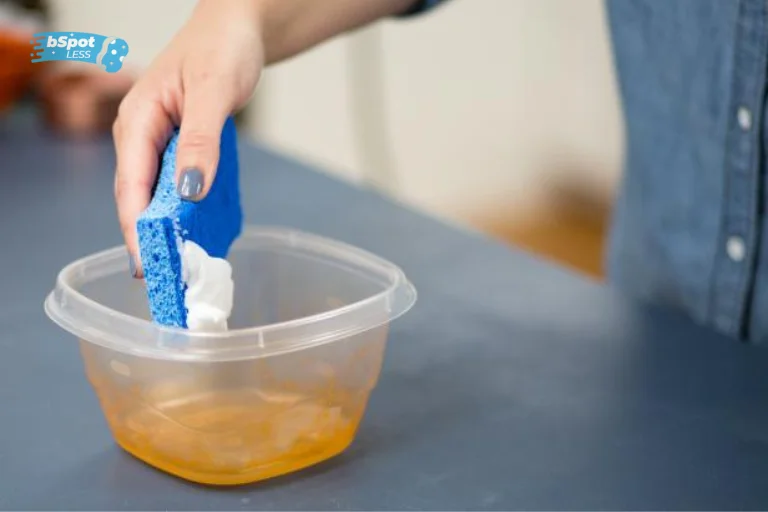Are you looking for a way to remove those stubborn coffee stains from your plastic mugs? If so, then this blog post is for you! We’ll take a look at some of the best ways to get rid of those pesky stains without damaging your mugs. Read on to learn more!
Gather Supplies
When it comes to cleaning coffee stains from plastic mugs, it’s important to have the right supplies. You’ll need a damp, soft sponge, baking soda, liquid dishwasher detergent, lemon juice, white vinegar and hydrogen peroxide. Make sure to have these items on hand before you start the cleaning process.
Pre-Treat the Stain
Before applying any cleaning solution to your coffee-stained plastic mug, it’s important to pre-treat the stain. One of the best ways to do this is by using baking soda. Simply sprinkle some baking soda on the stain and add a little water to make a paste. Scrub the stain with a damp, soft sponge. The gentle, abrasive nature of baking soda helps lift coffee or tea stains from the surface. Once you’ve finished scrubbing, rinse the mug well to remove any remaining baking soda. If the stain doesn’t come off with baking soda, you can try adding lemon juice or liquid dishwasher detergent for extra cleaning power.
Apply a Cleaning Solution
After pre-treating the coffee stain, it is time to apply a cleaning solution. Baking soda is an excellent choice as it is mild yet effective. Simply sprinkle baking soda on the stain and add a little water to make a paste. Scrub the stain with a damp, soft sponge. The gentle, abrasive nature of baking soda helps lift coffee or tea stains from the surface. Once you’ve finished scrubbing, rinse the mug well to remove any remaining residue. You may also want to consider adding some lemon juice for extra cleaning power. Place the baking soda in the bottom of your mug and pour in some fresh lemon juice. Allow it to sit for a few minutes before rinsing with cold water.
Scrub the Stain
Once you’ve pre-treated the stain, you’ll need to apply a cleaning solution and scrub the area. Baking soda is a great choice for this task. Simply mix the baking soda with a little water to make a paste, then gently scrub the stain with a soft sponge. Baking soda is gentle and abrasive, which helps lift and remove coffee or tea stains from the surface of plastic mugs. If the stain persists, repeat the cleaning steps until it’s gone.
Rinse with Cold Water
Once you’ve finished scrubbing, it’s important to rinse the mug with cold water to remove any remaining residue. This will help to ensure the stain is completely removed, and it will also help to keep the mug’s surface free of any unwanted substances. Be sure to rinse the mug thoroughly, as any remaining residue can cause further staining. After rinsing, you may need to repeat the cleaning steps if the stain has not been completely removed.
Repeat Cleaning Steps if Necessary
If the coffee stain is still present after your initial cleaning efforts, don’t panic. You can repeat the same steps again until the stain is gone. Start by wetting the area with cold water and then apply your cleaning solution. Scrub the stain with a damp, soft sponge and rinse away any remaining residue. You may need to repeat this process a few times, but eventually the stain should be gone.
Use Baking Soda for Tough Stains

For more difficult stains, baking soda can be used to help lift the stain from the mug. Begin by adding one teaspoon of baking soda to the cup. Then, wet the inside of your cup with cold water, and stir the baking soda with a spoon until it becomes a paste. Apply the paste directly on top of the stain, and let it sit for at least 10 minutes before scrubbing the area with a damp cloth. The gentle, abrasive nature of baking soda helps lift coffee or tea stains from the surface. Rinse well to remove any remaining residue, and repeat if necessary.
Apply a Detergent Solution
If the pre-treatment and cleaning solution steps have not been successful in removing the coffee stains, you may need to apply a detergent solution. Start by adding a small amount of liquid dishwasher detergent to your mug, and then pour hot water over it to create suds. Using a soft sponge or rag, gently scrub the stained area with the suds. Work in small circles, adding more hot water as needed, until all of the stains have been removed. Rinse your mug with cold water and dry with a cloth or paper towel. If the stains remain, you may need to try another method.
Soak the Mug in a Vinegar Solution
If you have a particularly stubborn stain, you can try soaking the mug in a vinegar solution. To make the solution, mix equal parts white vinegar and water together in a bowl. Submerge the mug in the solution and let it soak for 20 minutes. Once the mug has soaked, take it out and scrub it with a damp, soft sponge. The acidity of the vinegar should help to break down the stain. Rinse the mug well to remove any remaining vinegar residue. If the stain is still present after this, repeat the cleaning steps until it is completely gone.
Use Hydrogen Peroxide and Baking Soda
If you have a stubborn coffee stain on your plastic mug, try using hydrogen peroxide and baking soda. Mix together equal parts hydrogen peroxide and baking soda to create a paste, then apply it directly on the stain. Let it sit for a few minutes before scrubbing it with a damp cloth or soft brush. Rinse with cold water and repeat the cleaning process as necessary. This combination of natural ingredients can be a powerful tool in removing even the toughest coffee stains!

